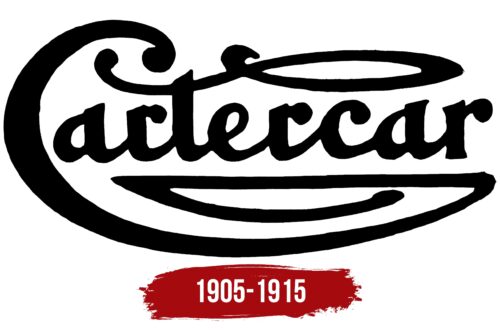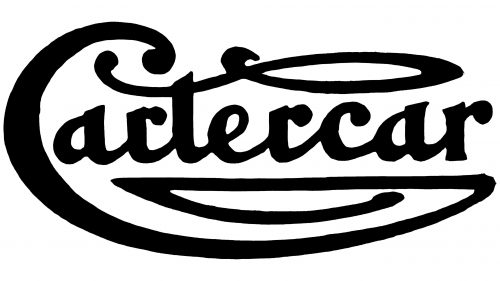The Cartercar logo conveys an innovative approach to car creation. The emblem represents the transformation from a brand of baby carriages to a modern manufacturer of travel cars. The symbols of the past and future intertwine in the logo, embodying endless development and improvement.
Cartercar: Brand overview
Cartercar, an innovative and cutting-edge American automobile company, was founded in 1905 by Byron J. Carter in Jackson, Michigan. The following year, the company moved to Detroit and, in 1907, became a permanent home in Pontiac, Michigan.
From 1905 to 1908, Cartercar specialized in producing high-wheeled motor baby carriages with innovative air-cooled engines. In 1908, the company introduced its first enclosed automobile.
Cartercar sought to offer powerful yet affordable touring cars that could appeal to the mid-priced segment of the market. Models such as the Model K, Model H, and Model S were widely recognized in the industry. Unique features such as air-cooled engines, friction transmissions, and worm drive rear axles gave Cartercar vehicles reliability. Prices for these models ranged from $1,250 to $1,750, making them affordable to a wide range of consumers.
Despite a promising start, Cartercar faced financial difficulties and went bankrupt in 1915. This led to its acquisition by banker William C. Durant, who merged it with Chevrolet. Cartercar’s downfall can be attributed to stiff competition from major automakers, overshadowing its innovative offerings.
By its success in 1913, Cartercar had produced more than 4,000 cars. Although the company lasted only ten years, its contributions to the automotive world left a lasting impression. The company was one of the early pioneers in developing air-cooled engines and made significant strides in creating affordable mid-priced cars. Although the brand didn’t last long, Cartercar’s legacy as an automotive pioneer continues to be recognized and respected in the history of the American automotive industry.
Meaning and History
What is Cartercar?
It is an American automaker known for its friction transmission system. Founded by Byron J. Carter, the company produced cars with a unique transmission design in the early 20th century. The cars were recognized for engineering innovations and advertised as easy-to-drive machines. Despite the novelty of the design, the company faced stiff competition from other manufacturers and was acquired by General Motors, which removed the brand from production.
1905 – 1915
The Cartercar logo on the hood featured elegant swirls and loops, creating a sophisticated, monogram-like design. The most prominent letter is the capital “C,” standing out with its commanding presence.
Below the “C,” a layered strip adds depth and complexity. The lowercase “t” includes a wavy line extending from its crossbar, mirroring the strip’s style and creating harmony in the design.
The brand “Cartercar” is written boldly, ensuring readability and impact. Large dots at the ends of some letters add a decorative touch, enhancing the logo’s charm.
The design elements—layered strip, wavy line, and bold letters—make the brand name stand out, adding a dynamic and artistic feel. The logo identifies the brand and serves as a piece of art, reflecting Cartercar’s elegance and attention to detail. The combination of sophisticated swirls, bold typography, and intricate details makes the Cartercar logo a memorable brand representation.





